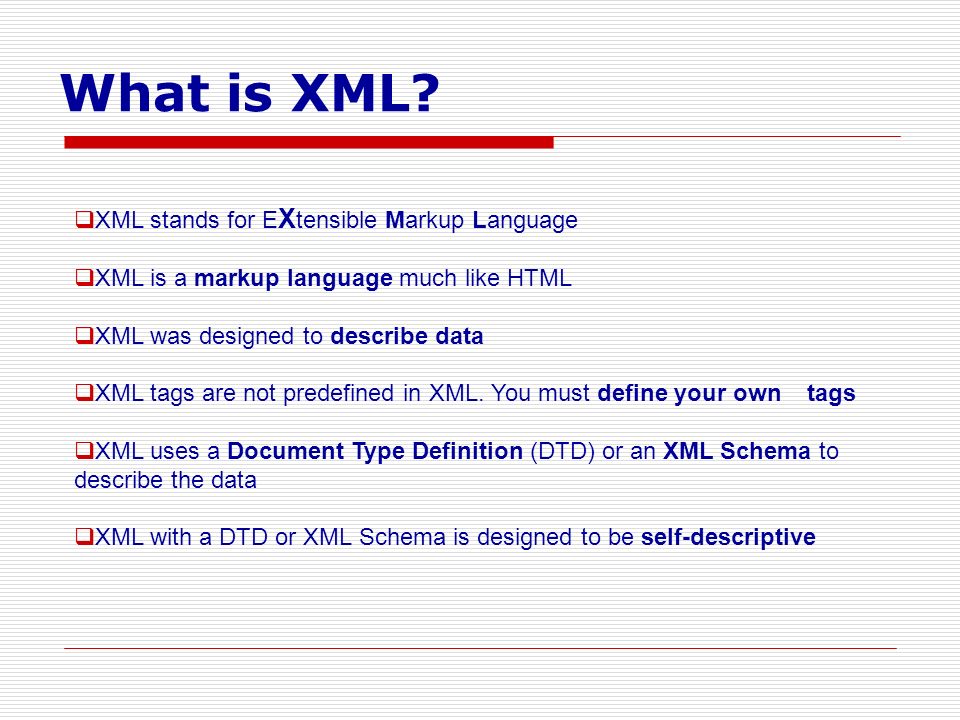Extensible Markup Language (XML) is used to describe data. The XML standard is a flexible way to create information formats and electronically share structured data via the public Internet, as well as via corporate networks.
XML code, a formal recommendation from the World Wide Web Consortium (W3C), is similar to Hypertext Markup Language (HTML). Both XML and HTML contain markup symbols to describe page or file contents. HTML code describes Web page content (mainly text and graphic images) only in terms of how it is to be displayed and interacted with.
What is XML?
- XML stands for eXtensible Markup Language
- XML is a markup language much like HTML
- XML was designed to store and transport data
- XML was designed to be self-descriptive
- XML is a W3C Recommendation
XML Does Not DO Anything
Maybe it is a little hard to understand, but XML does not DO anything.
This note is a note to Tove from Jani, stored as XML:
<note>
<to>Tove</to>
<from>Jani</from>
<heading>Reminder</heading>
<body>Don’t forget me this weekend!</body>
</note>
The XML above is quite self-descriptive:
- It has sender information.
- It has receiver information
- It has a heading
- It has a message body.
But still, the XML above does not DO anything. XML is just information wrapped in tags.
Note
To: Tove
From: Jani
Reminder
Don’t forget me this weekend!
The Difference Between XML and HTML
XML and HTML were designed with different goals:
- XML was designed to carry data – with focus on what data is
- HTML was designed to display data – with focus on how data looks
- XML tags are not predefined like HTML tags are

